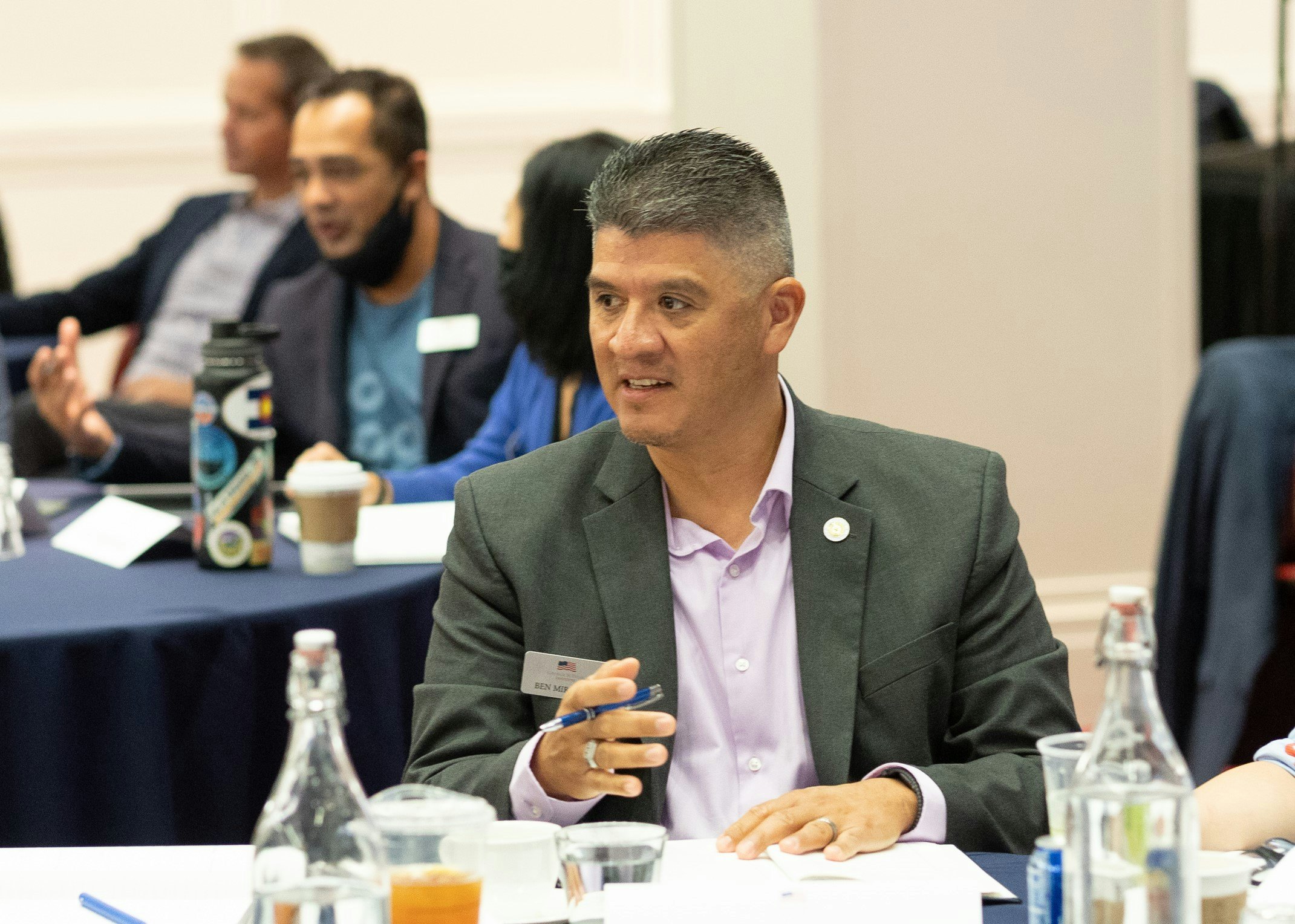This week, the Bush Center will host its 6th annual W100K, a 100-kilometer mountain bike ride for seriously wounded or injured post-9/11 veterans and military personnel. This event spotlights the effectiveness of sport in helping our service men and women recover from their visible and invisible wounds.
Today, we hear from the CEO of One Mind, General Pete Chiarelli, U.S. Army General (Retired) who as Vice Chief of Staff of the Army led the Department of Defense efforts on post-traumatic stress (PTS), traumatic brain injury (TBI), and suicide prevention. He is a retired General with almost 40 years of experience, and was appointed the Chief Executive Officer of One Mind in 2012.
- Can you give us some background on how/why One Mind was formed?
Co-founders Garen and Shari Staglin and Congressman Patrick Kennedy formed One Mind in May 2011. Their vision was to accelerate the development of improved diagnostics, more effective treatments, and, ultimately, preventions and cures for all types of brain disease and injury – simply stated, to establish a new model for neuroscience research.
The brain is the least understood organ in the human body. It is the most complex organ in the body and the stigma associated with the maladies of the brain complicate the problem. Our approach is unique in the marketplace. It is not about spending more on research that is conducted and left in research silos. It is about investing in collaborative research that promotes sharing of high quality data and is totally focused on the patient.
We are collaborators. We connect the dots. We bring people together to create public-private partnerships between governmental, corporate, scientific, and philanthropic communities to improve the lives of current and future generations.
We sponsor groundbreaking new research, and are currently building a brain data exchange portal where researchers can access databases and use data mining tools to analyze shared scientific data. We are piloting our research model by first focusing on TBI and PTS in an attempt to demonstrate that when researchers collaborate, share – not in a single lab or university, but in multiple research centers across the country – and adopt our open science principles, we can find better diagnostics, treatments and someday cures for neurodegenerative diseases.
- Can you identify the top advancements in Invisible Wounds research that could change the game for service men and women?
Imaging biomarker and blood biomarkers – These biomarkers will provide the first biologically-based diagnostics for those suffering from mild and moderate TBI. They will also serve as accurate predictors of patient outcomes and allow the stratification of patients and the de-risking of clinical trials to qualify drugs, devices and treatments.
PatientsLikeMe (PLM) PTS and TBI online communities– One Mind has partnered with PLM to create free online communities for Veterans and active duty service members afflicted by the invisible wounds of war, their families and caregivers, and all others who are affected by PTS and TBI. These online communities provide a place where people living with invisible wounds can connect, learn, share with others, become better informed, and advocate more effectively for their own health and the health of those they love and become more competent and enlightened citizens. Additionally, because our researchers helped determine the content for the sites, the patient reported data helps researchers accelerate the discovery of better diagnostics and treatments for PTS and TBI.
As of the beginning of September 2016, PLM has registered over 25,000 patients with PTS, TBI, or both.
- Are there gaps in the research that is being conducted on the invisible wounds of war? If so, can you identify them?
Yes, there are gaps in the research being conducted. The majority of funding goes to siloed research. We need more data sharing, more funding tied to data sharing and collaboration, and to change the current research incentive system so it rewards team science.
- What would you say to other veterans or active duty service members who are struggling with invisible wounds; especially those who have not made the decision to seek help?
Seek treatment
Evidence-based treatments are covered by insurance providers – must put in the effort to find the right therapist for you.
Beware of alternative therapies that are not evidence-based.
Join PatientsLikeMe (patientslikeme.com) – those interested can sign up through the main PLM webpage, or here at the customized Veterans sign-up page.






























